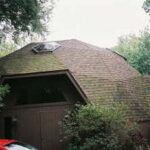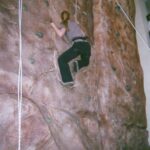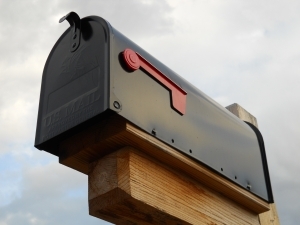Most of us can recall a simple time when we were young out on the playground. One of the best things out there for me was the giant spider web dome. I would spend hours weaving in and out of the small holes, or just using it to avoid the person who was “it” while playing tag, or just lounging comfortably atop the giant structure and watch the clouds go by. It is amazing how easily amused children can be. Why keep this fond treasure of days gone by to ourselves? It is really quite easy to construct one of these palaces of fun and imagination so that the younger generations can find the same hours of enjoyment. Just a quick stop at the local hardware store and you are off on a project almost anyone can complete.
Before you get started in the building process, you will need a few things. Here is a list of some of that: Drill, Saw (only needed if cutting pipe to size), 2 wrenches (sizes depend on bolts purchased), Four-way plastic pipe fittings (must be flat on one side. number needed depends on size of the climber), 24″ long 1-2″ thick PVC Pipe (number needed depends on desired size), Five-way Plastic pipe fittings (number needed depends on size), 2-1/2″ bolts with nut and two washers (2 bolts for each pipe), Paint (optional).
The other thing that you will need is a plan. These are easy to draw up or you can find one online. There are also some places that will sell these plans. If you are drawing your own there are a few things to consider. For a small dome, you will need about 10 pieces of pipe for the base, 10 pieces for the second level, and 5 for the third. To connect the rings together you will need 20 for the base to second level, 15 for the second to third level, and 5 for the top. Your plans may differ from these numbers based on the size of your dome. this is just an example. For the pipe fittings you will need 10 four-way for the base, 10 five-way for the second level, 5 five-way for the third and one five-way for the top. Now it is time to make the shopping list. Count up all of the joints, pipes, fittings, nuts, and bolts that you are going to need. You can keep reading for some better tips and methods to get the right amount of supplies that you will need.
Now comes one of the funnest steps; shopping. Whether you like to shop or just hang out at the hardware store, this is a lot of fun. Before you go, you will need to make the list. Based on your plans, count the number of total PVC pipes you will need (most hardware stores will cut them into the 24″ sections at no extra cost), number of pipe fittings you need (these fittings will need to be somewhat bowl shaped), multiply the PVC pipe number by 2 for the number of bolts and washers you need, multiply that number by 2 again for the number of washers, and then add in any paint you may want so that you can liven up the whole dome. Bright colors are great for this. You may also want to ask the store if they have colored PVC pipe. Some places have a variety of different colors. This makes it easier since you do not have to paint and you won’t have to worry about the paint peeling. Now you are ready to go buy everything. Don’t worry, I’ll wait for you to get back before I keep going.
Let’s get down to the “dirty work”. If the store does not cut the pipe to order, you will need to measure them out and cut them. Depending on preference you may want larger or smaller pieces of pipe, this is just a guide. Two feet usually gives enough room to squeeze through and still offers the sturdiness so it won’t collapse. As with all buildings you will need to start from the ground up. It is easiest to sort all of the pipes and fittings so you can easily grab whichever color or style that you need. If you do not have colored PVC and want to paint the pipes, this is where you need to paint them. It is easier to paint now then when it is all put together. Once they are dry, then you can move to the next step.
You will want to grab a four-way pipe fitting and place it flat side on the ground. Next, insert one pipe in the bottom right hole and one on the bottom left. This will start your base. Continue to add the fittings and pipe all the way around the bottom. Now fit two more pipes into each of the upper holes on the fittings. This will complete the base. Now you will be ready to start the next level. Continue to put pipes into each opening of the fittings. Once all of the holes are filled you will do the same for the next level. Once you get to the top, you may need to pull on the pipes to get them to fit into the top fitting. Don’t worry, they are plastic and can be muscled a little. A nice tight fit is best because it will add to the durability of the whole thing.
Once all of the pipes are put together, you will need to mark the holes for the bolts. With a pen or pencil, measure off about a half inch from the edge of the fitting. Make a mark right in the center of the pipe. While you are making the marks, you may want to number the end of pipe going into the fitting and the fitting itself. This will help you to marry all of the holes when you put it back together. Once you have marked all of the pipes and fittings you can begin drilling. Some people find it easy enough to drill the holes while the dome is put together, while others prefer to take it all back apart and then drill the holes. This is entirely up to your personal preference. You will want make sure that the pipe is also in the fitting while you drill though, to make sure that the holes line up correctly for the bolts. You will want to use a drill bit that is the same size as the bolts that you purchased. You want the bolts to fit snugly in the hole and not roll around too much. If you took the dome apart in the last step, this is where you put it back together. If you didn’t, then just continue on. Place the bolt with one washer into each hole. You will want the bolt head to the outside of the dome. Now slide another washer and the nut onto the threads and tighten it down. You want it very snug on but be careful not to flatten the pipe and fitting. Too much pressure on the fitting can cause cracking and breakage. You also want the threads to be sticking past the nut (known as thread protrusion). This will allow you to put a protective cap on the end and will also ensure that the nut stays on.
Once all of the bolts are in and tight, you will want to put a little bit of paint or torque stripe on the threads. This will make it easy to check periodically. If the nuts start to come loose, the paint will be cracked. You can ensure the safety of your child if you check the paint on the nuts once or twice a year. You may also want to put some plastic covers on the threads (available at most hardware stores) so that they do not scratch any children climbing around. You will also want to double check each joint to ensure that all of the bolts and pipes are in and secure (I usually forget at least one bolt whenever I put anything together).
Once it is all done and checked over you can take the funnest step, the test run. Go for a quick climb. You want to climb over it first just to make sure it is sturdy enough to hold your weight (and its still pretty fun). Listen for creaking and cracking. If you have any problems try putting in a new piece of pipe. Sometimes the PVC pipe may be bad when you bought it. This step will ensure the safety of your kids.
Now for the greatest step by far. Unleash the kids on it. Now you can sit back and relax while watching your kids. You can now have the knowledge that you are the coolest parent on the block (at least until the parents down the street buy the newest game system for their kids).
There are a couple of optional things that you can do for your climber. These include little things you can do for a better and safer set up, or just periodic maintenance to make sure it stays in top shape. Either way, some things you may want to consider are: Make sure you periodically (once every month or two) check it over for durability and bolt tightness. If you can afford them, use lock washers to decrease the possibility of the nuts loosening over time. Colored PVC pipe is a lot easier, cost effective and weather resistant to use. Let your kids help with the color scheme. Make it a family project. Everyone can help put this together (just make sure you double check everything). Keep spare pieces of pipe and fittings around in case one gets worn or old. Make sure that the paints or colors you use are “kid friendly”. Be alert for creaking or snapping sounds. Some PVC pipe can wear quickly and you don’t want this thing to collapse.





